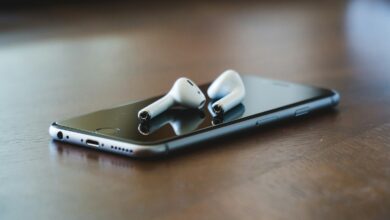Step-by-Step Tutorial: How to Download Photos from iCloud on iPhone, Mac

Choosing the right microphone is critical for capturing high-quality audio recordings. The type of microphone you select can have a significant impact on the overall sound quality of your recordings. In this article, we will explore the different varieties of microphones available and discuss key factors to consider when selecting a microphone for your specific needs.
Whether you are recording music, speeches, podcasts, or videos, using an appropriate microphone matched to your recording environment and audio source is vital for achieving professional-sounding results. Understanding microphone specifications and testing different models properly allows you to make an informed decision when purchasing a microphone.
Additionally, proper microphone setup and techniques for placement relative to the sound source can further optimize performance. By following best practices and recommendations outlined here, you will be well on your way to selecting and using the ideal microphone for any recording situation.
Types of Microphones
There are several main types of microphones to choose from, each with their own strengths and ideal usage scenarios:
Exploring the Different Microphone Varieties
When selecting a microphone, it is helpful to understand the distinguishing characteristics and best uses cases of the different microphone varieties available today:
Dynamic microphones
Dynamic microphones work by using a diaphragm attached to a moving coil of wire suspended in a magnetic field. They are excellent at handling high volume levels and rejecting off-axis sounds. Dynamic mics are rugged, reliable, and inexpensive. They are the preferred choice for live vocal performances and amplifying musical instruments.
Condenser microphones
Condenser microphones use an electrically charged thin diaphragm stretched close to a metal disk called the backplate. They require power and are extremely sensitive to high frequencies and transients. Condenser mics produce crisp, accurate audio recordings. They are ideal for studio recording, acoustic instruments, choirs and orchestras.
Ribbon microphones
Ribbon microphones capture sound using a thin corrugated metal ribbon suspended between magnets. They have excellent transient response and a smooth natural frequency response. Ribbon mics have a bi-directional polar pattern perfect for a rich, realistic sound when recording instruments or vocals.
USB microphones
USB microphones have an integrated analog-to-digital converter and connect directly to a computer. They simplify home recording by eliminating the need for an audio interface or external preamp. USB mics are plug-and-play and convenient for podcasting, voiceovers, video conferencing and amateur recording.
Factors to Consider When Choosing a Microphone
Selecting the right microphone involves evaluating various technical specifications and considering the intended recording application, environment, and sound source:
Understanding Key Technical Specifications
When researching and comparing different microphones, there are certain key specifications to take note of that indicate how the microphone will perform:
Frequency response
The frequency response range of a microphone indicates the lowest and highest frequencies it can accurately reproduce. Most mics have a near-linear response over a specified range suited for certain sound sources.
Polar pattern
The polar pattern determines how sensitive the microphone is to sounds arriving from different angles. Omnidirectional mics pick up in all directions; bidirectional, at the front and rear; and cardioid mics are most sensitive to sound from the front.
Sensitivity
Sensitivity indicates how well the microphone converts acoustic sound pressure levels into output voltage. More sensitive mics require less gain but can more easily overload from loud signals.
Maximum sound pressure level
The max SPL indicates the loudest sounds the microphone can handle before distorting. This determines if a mic is suitable for quiet or loud audio sources.
How to Test a Microphone
Testing microphone performance before purchasing or using one for critical recordings enables proper evaluation:
Ensuring Accurate Performance Evaluation
To accurately test and compare microphones, a controlled and consistent environment should be used to evaluate key specifications:
Setting up the testing environment
Use a quiet room without background noise and mount the mic on a stand pointed toward the audio source from a fixed distance. The mic signal should run through an audio interface into recording software.
Proper microphone setup
Configure the microphone gain/level appropriately for the sound source volume. Phantom power should be enabled for condenser mics. Any processing like EQ should be disabled.
Recording and evaluating test audio
Record speech, acoustic instruments, and other sounds representative of the mic’s intended use. Critically listen back while judging frequency response, polar pattern, sensitivity, distortion and other quality factors.
Tips for Getting the Most Out of Your Microphone
Once you have selected the right microphone for your needs, follow these tips for optimal performance:
Optimizing Microphone Performance
There are several best practices to employ when setting up your microphone to ensure you capture the highest quality sound:
Selecting the appropriate microphone for specific needs
Choose a mic designed for your particular sound source and environment – whether vocals, acoustic guitar, drums, or an interview in a noisy room.
Utilizing suitable accessories
Use necessary accessories like shock mounts, pop filters, and windscreens to enhance the sound and protect the microphone.
Positioning the microphone effectively
Place the mic properly relative to the sound source – such as the optimal distance from a singer’s mouth to the microphone.
Implementing proper gain staging techniques
Set the mic gain correctly to maximize signal to noise ratio and avoid distortion or clipping the audio signal.
Conclusion
In summary, understanding different microphone types and specifications, evaluating options thorough testing, and utilizing optimal setup techniques allows you to select the right microphone for your specific audio recording needs. Choosing a microphone suited for a particular sound source and environment, along with proper placement and gain staging, enables you to achieve professional-quality recordings with clarity, detail, and minimal noise. By taking the time to research microphone technical specifications, judging frequency response, polar patterns, sensitivity and other factors during hands-on testing, you can make a well-informed microphone selection. Following the best practice microphone use recommendations covered here will then allow you to get the highest quality recordings from any microphone.



